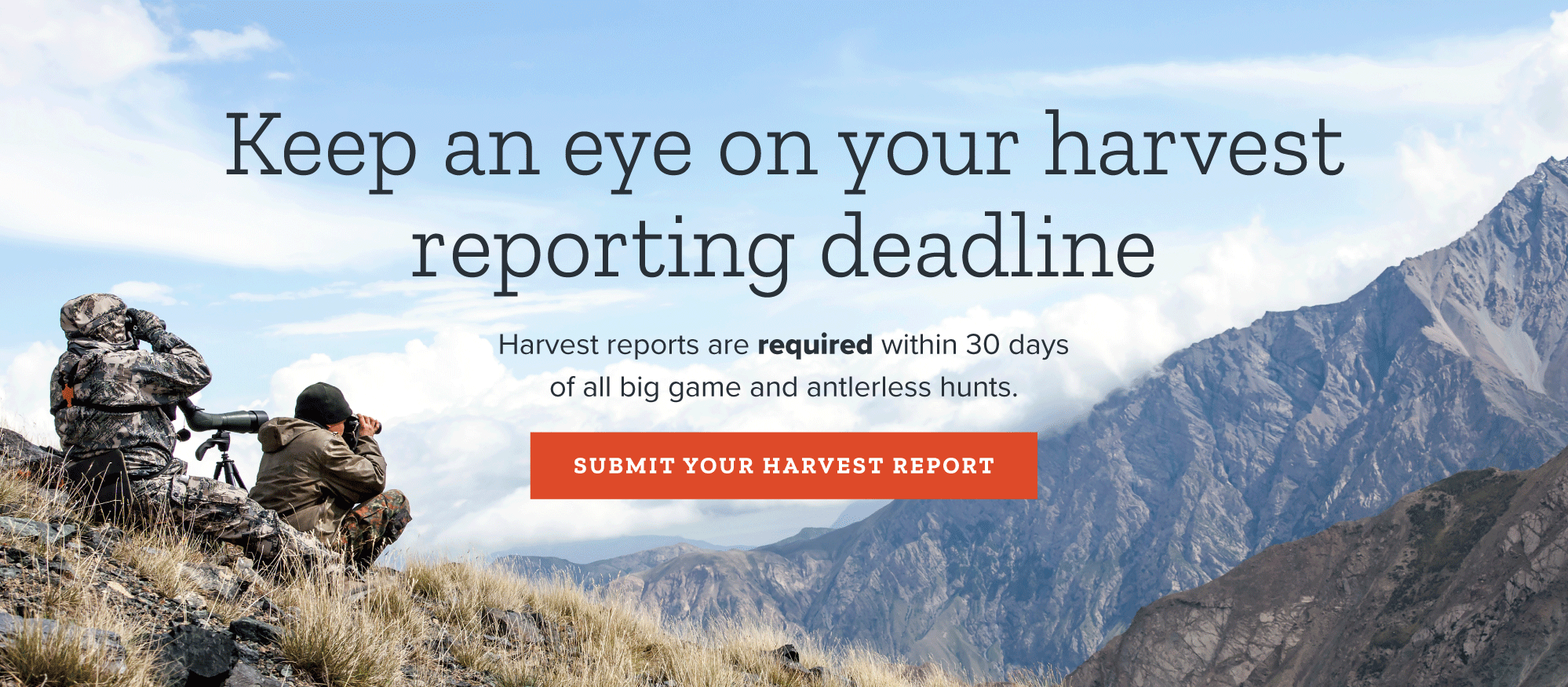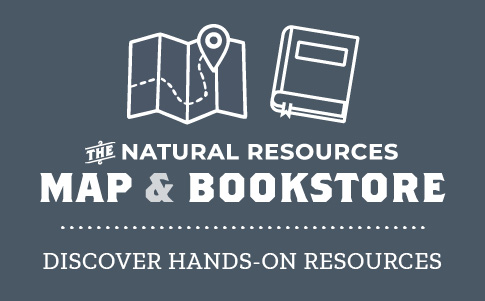Administrative rule R657-73
Tagging requirements
Scroll to bottom of page to view a menu of all administrative rules
KEY: wildlife, game laws, big game
Date of Last Change: Oct. 22, 2025
Notice of Continuation: New Rule
Authorizing, and Implementing or Interpreted Law: 23A-4-201; 23A-4-207
R657-73-1. Purpose and Authority.
(1) Under the authority of Sections 23A-4-201 and 23A-4-207, the division may issue wildlife documents in accordance with the rules of the Wildlife Board.
(2) This rule provides the standards and procedures for the tagging and electronic tagging of harvested animals.
R657-73-2. Definitions.
(1) Terms used for this rule are defined in Section 23A-1-101.
(2) In addition:
(a) "Electronic harvest code" means a code or authorization number issued after a hunter or trapper electronically tags their harvested animal.
(b) "Electronic permit" means an electronic document that grants authority to engage in specified activities.
(c) "Electronic tagging" means an electronic means of identification used to document harvest of protected wildlife.
R657-73-3. Big Game Tagging.
(1) A person that takes a big game species must tag the carcass, as provided in Sections 23A-4-709 and R657-5-17, immediately upon taking possession of the carcass.
(2) To tag a carcass, a person shall:
(a) completely detach the tag from the permit;
(b) completely remove the appropriate notches to correspond with the date the animal was taken; or
(c) electronically notch the electronic permit appropriately to correspond with the date the animal was taken and other information required; and
(d) attach the physical tag to the carcass so that the tag is securely fastened and visible; or
(e) if e-tagging, must have electronic harvest code in your possession.
(3) A person may not:
(a) remove more than one notch indicating the date; or
(b) tag more than one carcass using the same physical or electronic permit.
(4) A person may not hunt or pursue a big game species after:
(a) shooting and retrieving big game;
(b) the tag is detached from the permit;
(c) any of the notches have been removed from the tag; or
(d) the tag is electronically notched through a state-issued application.
R657-73-4. Upland Game Tagging.
(1) A person that takes a greater sage-grouse or a sharp-tailed grouse must tag the carcass, as provided in Sections 23A-4-709 and R657-6-14, immediately upon taking possession of the carcass.
(2) To tag a carcass, a person shall:
(a) completely detach the tag from the permit;
(b) completely remove the appropriate notches to correspond with the date the animal was taken; or
(c) electronically notch the electronic permit appropriately to correspond with the date the animal was taken and other information required; and
(d) attach the physical tag to the carcass so that the tag is securely fastened and visible; or
(e) if e-tagging, must have electronic harvest code in your possession.
(3) A person may not:
(a) remove more than one notch indicating the date; or
(b) tag more than one carcass using the same physical or electronic permit.
(4) A person may not hunt or pursue greater sage-grouse or sharp-tailed grouse after:
(a) shooting and retrieving birds equal to the number of unused permits in possession, or daily bag limit;
(b) the tag is detached from the permit; or
(c) any of the notches have been removed from the tag; or
(d) the tag is electronically notched through a state-issued application.
R657-73-5. Tundra Swan and Sandhill Crane Tagging.
(1)(a) A person that takes a tundra swan or sandhill crane must tag the carcass, as provided in Sections 23A-4-709 and R657-9-6, immediately upon taking possession of the carcass and reaching a location listed in Subsections (i) through (iii), that is closest to the place where the carcass was first retrieved by the hunter, another person, or a dog:
(i) the blind or fixed location in the field where the person taking the tundra swan was set up and from where they shot at the tundra swan;
(ii) a vessel available to the person; or
(iii) the first area of land free from standing water.
(b) "Vessel" means, any type of watercraft used or capable of being used as a means of transportation on water.
(2) To tag a tundra swan and sandhill crane carcass, a person shall:
(a) completely detach the tag from the license or permit;
(b) completely remove the appropriate notches to correspond with the date the tundra swan or sandhill crane was taken; or
(c) electronically notch the electronic permit appropriately to correspond with the date a tundra swan and sandhill crane was taken and other information required; and
(d) attach the physical tag to the carcass so that the tag is securely fastened and visible; or
(e) if e-tagging, must have electronic harvest code in your possession.
(3) A person may not:
(a) remove more than one notch indicating the date; or
(b) tag more than one tundra swan or sandhill crane carcass using the same physical or electronic permit.
(4) A person may not hunt or pursue a tundra swan or sandhill crane after;
(a) shooting and retrieving the tundra swan or sandhill crane;
(b) the tag is detached from the permit; or
(c) any of the notches have been removed from the tag; or
(d) the tag is electronically notched through a state-issued application.
R657-73-6. Bobcat Tagging.
(1)(a) Only a person who possesses a valid bobcat tag issued in their name and who is present upon discovery of a bobcat in their marked trapping device or the device of another under Subsection R657-11-9(6) may kill the animal.
(b) The person who kills a bobcat caught in a trapping device is required to attach their bobcat tag or electronic harvest code to the carcass, as provided in Subsections (2) through (8).
(2) The pelt or unskinned carcass of any bobcat must be tagged in accordance with Sections 23A-4-709 and R657-11-5.
(3) To tag a bobcat carcass, a person shall:
(a) completely detach the tag from the license or permit;
(b) completely remove the appropriate notches to correspond with the date the bobcat was taken; or
(c) electronically notch the electronic permit appropriately to correspond with the date a bobcat was taken and other information required; and
(d) attach the physical tag to the carcass so that the tag is securely fastened and visible; or
(e) if e-tagging, must have electronic harvest code in your possession.
(4) A person may not:
(a) remove more than one notch indicating the date; or
(b) tag more than one bobcat carcass using the same physical or electronic permit.
(5) A person may not hunt or pursue a bobcat after:
(a) harvesting and retrieving the bobcat;
(b) the tag is detached from the permit; or
(c) any of the notches have been removed from the tag; or
(d) the tag is electronically notched through a state-issued application.
(6) The tag or electronic harvest code must remain with the pelt or unskinned carcass until a permanent tag has been affixed.
(7) Possession of an untagged green pelt or unskinned carcass is prima facie evidence of unlawful taking and possession.
(8) The lower jaw of each bobcat taken must be removed and tagged with the numbered jaw tag corresponding to the number of the temporary possession tag affixed to the hide.
R657-73-7. Black Bear Tagging.
(1) The carcass of a bear must be tagged in accordance with Sections 23A-4-709 and R657-33-15.
(2) The carcass of a bear must be tagged with a temporary possession tag or electronic harvest code before the carcass is moved from or the hunter leaves the site of kill.
(3) To tag a carcass, a person shall:
(a) completely detach the tag from the permit;
(b) completely remove the appropriate notches to correspond with the date the animal was taken; or
(c) electronically notch the electronic permit appropriately to correspond with the date the animal was taken and other information required; and
(d) attach the physical tag to the carcass so that the tag is securely fastened and visible; or
(e) if e-tagging, must have electronic harvest code in your possession.
(4) A person may not hunt or pursue a black bear after:
(a) shooting and retrieving a black bear;
(b) the tag is detached from the permit;
(c) any of the notches have been removed from the tag; or
(d) the tag is electronically notched through a state-issued application.
(5) The temporary possession tag or electronic harvest code:
(a) must remain attached to the pelt or unskinned carcass until the permanent possession tag is attached; and
(b) is only valid for 48 hours after the date of kill.
(6) A person may not possess a bear pelt or unskinned carcass without a valid permanent possession tag affixed to the pelt or unskinned carcass. This provision does not apply to a person in possession of properly tagged carcass or pelt within 48 hours after the kill, provided the person was issued and is in possession of a valid permit.
R657-73-8. Wild Turkey Tagging.
(1) A person that takes a wild turkey must tag the carcass, as provided in Sections 23A-4-709 and R657-54a-11, immediately upon taking possession of the carcass.
(2) To tag a carcass, a person shall:
(a) completely detach the tag from the permit;
(b) completely remove the appropriate notches to correspond with:
(i) the date the wild turkey was taken;
(ii) the sex of the wild turkey; or
(c) electronically notch the electronic permit appropriately to correspond with the date the animal was taken and other information required; and
(d) attach the physical tag to the carcass so that the tag is securely fastened and visible; or
(e) if e-tagging, must have electronic harvest code in your possession.
(3) A person may not:
(a) remove more than one notch indicating the date or sex; or
(b) tag more than one carcass using the same physical or electronic permit.
(4) A person may not hunt or pursue a wild turkey after:
(a) shooting and retrieving the bird;
(b) the tag is detached from the permit;
(c) any of the notches have been removed from the tag; or
(d) the tag is electronically notched through a state-issued application.

















